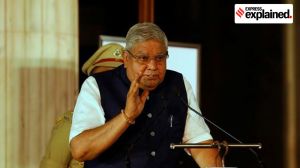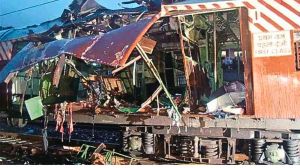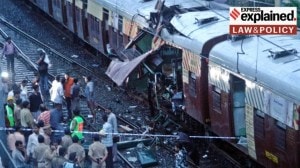UPSC Key: Aviation Disaster, Iran-Israel Conflict and Free Speech
Why International Atomic Energy Agency is relevant to the UPSC exam? What is the significance of topics such as Montreal Convention treaty, causes of inflation and mayday call on both the preliminary and main exams? You can learn more by reading the Indian Express UPSC Key for June 13, 2025.
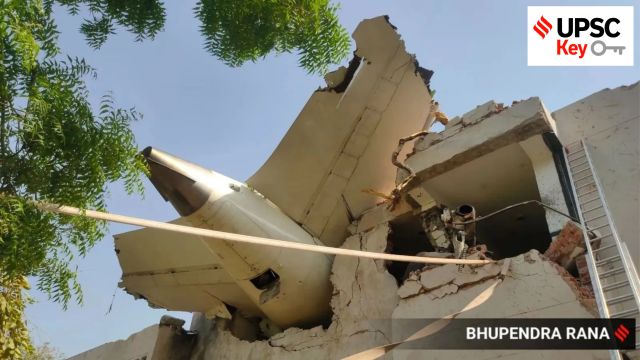 UPSC Key June 2025: Here's what you should be reading from the June 13, 2025 edition of The Indian Express
UPSC Key June 2025: Here's what you should be reading from the June 13, 2025 edition of The Indian Express Important topics and their relevance in UPSC CSE exam for June 13, 2025. If you missed the June 12, 2025 UPSC CSE exam key from the Indian Express, read it here
THE WORLD
As Israel appears ready to attack Iran, US pulls out personnel from West Asia
Syllabus:
Preliminary Examination: Current events of national and international importance.
Mains Examination: General Studies II: Effect of policies and politics of developed and developing countries on India’s interests.
What’s the ongoing story: Israel’s latest military operation inside Iran, carried out just ahead of nuclear discussions between Tehran and the US in Oman, marks a turning point in what was once a shadow conflict. Israeli officials say that the airstrikes were aimed at disrupting Iran’s nuclear ambitions.
Key Points to Ponder:
• Israel’s latest military operation inside Iran-what you know so far?
• Iran-Israel Conflict-know the background
• Iran-Israel bilateral relations-know the present situation
• How do tensions in West Asia affect global energy security?
• What diplomatic challenges India can face in balancing its ties with both Israel and Iran?
• What role can international organizations like the United Nations play in de-escalating the Israel-Iran tensions?
Key Takeaways:
• The operation — dubbed “Rising Lion” — struck key nuclear and military infrastructure and allegedly killed high-ranking Iranian figures, including Revolutionary Guards Commander Hossein Salami and two prominent nuclear scientists. Iran confirmed Salami’s death on state media.
• Though the US distanced itself from the operation, the strikes arrive amid growing tension around Tehran’s uranium enrichment program, and just days after Donald Trump acknowledged that “it could be a dangerous place” for US forces in the region.
Do You Know:
Here’s a look back at the relations between the two countries in the past:
• 1979 – A revolution
The overthrow of Iran’s Western-aligned Shah ends formal ties with Israel. The new Islamic regime adopts anti-Israel ideology as a core pillar of its foreign policy.
• 1982 – Hezbollah emerges as Iran’s regional proxy
Amid Israel’s invasion of Lebanon, Iran’s Revolutionary Guard aids in establishing Hezbollah, a Shi’ite militia that would grow into one of Israel’s most formidable enemies.
• 1983 – Suicide bombings shift the balance in Lebanon
Iran-backed militants use suicide attacks to push out Western and Israeli forces. In November, a car bomb targets the Israeli military headquarters in Lebanon. Israel later retreats from much of the region.
• 1992–1994 – Deadly attacks in Argentina
Bombings in Buenos Aires hit the Israeli embassy and a Jewish community center, killing dozens. Iran and Hezbollah are accused, but both deny involvement.
• 2002 – Hidden nuclear work comes to light
Reports of Iran’s secret uranium enrichment facilities raise alarms globally. Israel urges a hardline response, warning that Tehran may be pursuing nuclear weapons.
• 2006 – A costly war with Hezbollah
Israel and Hezbollah fight a brutal month-long war. Despite heavy firepower, Israel fails to neutralize the group. The conflict ends in a military and political deadlock.
• 2009 – Khamenei likens Israel to a ‘cancer’
Iran’s Supreme Leader, Ayatollah Ali Khamenei, brands Israel “a dangerous and fatal cancer,” reinforcing Tehran’s hostile stance.
• 2010 – Cyber warfare begins with Stuxnet
The Stuxnet virus, widely attributed to US and Israeli intelligence, cripples Iran’s Natanz nuclear site. It marks the first known case of a cyberattack targeting industrial systems.
• 2012 – A scientist is killed in Tehran
Mostafa Ahmadi-Roshan, a key Iranian nuclear scientist, is killed when a bomb is planted on his car. A city official blames Israeli agents.
• 2018 – Trump exits nuclear deal; Israel cheers
President Donald Trump pulls the US out of the 2015 Iran nuclear agreement. Netanyahu calls it “a historic move.” That May, Israel claims to have struck Iranian positions in Syria after rockets target the Golan Heights.
• 2020 – Soleimani killed, tensions spike
A US drone strike in Baghdad kills General Qassem Soleimani, leader of Iran’s Quds Force. Israel welcomes the move. Iran retaliates with missile attacks on US bases in Iraq, injuring around 100 American troops.
• 2021 – Iran accuses Israel of another assassination
Mohsen Fakhrizadeh, thought to be the architect of Iran’s alleged nuclear weapons program, is killed. Tehran blames Israel, which remains silent.
• 2022 – Joint US-Israel pledge to block Iran’s nukes
During a visit to Israel, US President Joe Biden signs the “Jerusalem Declaration” alongside Israeli PM Yair Lapid, vowing to prevent Iran from acquiring nuclear weapons. Biden also hints at military force as a “last resort.”
• April 2024 – Embassy strike triggers unprecedented Iranian attack
A suspected Israeli airstrike destroys Iran’s consulate in Damascus, killing seven IRGC officers. Iran retaliates by launching hundreds of drones and missiles at Israel — its first direct strike on Israeli territory.
• October 2024 – Iran escalates with 180 missiles
Tehran launches a large-scale missile attack, claiming retaliation for Israel’s assassinations of Hezbollah leader Hassan Nasrallah and Hamas chief Ismail Haniyeh. Israel strikes back days later, targeting Iranian military sites. Explosions are reported in Tehran and nearby bases, with Iranian officials reporting limited damage.
• June 2025 – ‘Rising Lion’ strikes Tehran’s nuclear program
Israel confirms a broad military operation targeting Iran’s nuclear program, ballistic missile infrastructure, and senior scientists. It declares a state of emergency at home in preparation for Iranian retaliation. Iranian media report the deaths of Commander Hossein Salami and nuclear scientists Fereydoun Abbasi-Davani and Mohammad Mehdi Tehranchi.
Other Important Articles Covering the same topic:
📍How the world reacted to Israel’s strikes on Iran’s nuclear facilities
Previous year UPSC Main Question Covering similar theme:
📍“India’s relations with Israel have, of late, acquired a depth and diversity, which cannot be rolled back.” Discuss. (2018)
IAEA censures Iran over breaking rules, Tehran announces new enrichment site
Syllabus:
Preliminary Examination: Current events of national and international importance.
Mains Examination: General Studies II: Important International institutions, agencies and fora- their structure, mandate.
What’s the ongoing story: The UN nuclear watchdog’s board of governors on Thursday formally found that Iran isn’t complying with its nuclear obligations for the first time in 20 years, a move that could lead to further tensions and set in motion an effort to restore United Nations sanctions on Tehran later this year.
Key Points to Ponder:
• International Atomic Energy Agency (IAEA)—Know about the same
• What does the International Atomic Energy Agency (IAEA) do?
• Uranium enrichment is a process used primarily for what?
• Map Work-Nuclear facilities in Iran
• Iran’s nuclear sites, such as Natanz and Fordow, are primarily used for what?
• Know the role of the Joint Comprehensive Plan of Action (JCPOA) and the IAEA in addressing Iran’s nuclear program.
• What is the significance of the 2023 IAEA resolution on Iran’s nuclear program?
• Know in detail the implications of Iran’s nuclear enrichment announcement in response to IAEA censure on global nuclear diplomacy.
Key Takeaways:
• Iran reacted immediately, saying it will establish a new enrichment facility “in a secure location” and that “other measures are also being planned.”
• “The Islamic Republic of Iran has no choice but to respond to this political resolution,” the Iranian Foreign Ministry and the Atomic Energy Organization of Iran said in a joint statement.
• US President Donald Trump previously warned that Israel or America could carry out airstrikes targeting Iranian nuclear facilities if negotiations failed — and some American personnel and their families have begun leaving the region over the tensions, which come ahead of a new round of Iran-US talks Sunday in Oman.
• In Israel, the US Embassy ordered American government employees and their families to remain in the Tel Aviv area over security concerns. Nineteen countries on the International Atomic Energy Agency’s board, which represents the agency’s member nations, voted for the resolution, according to diplomats who spoke on condition of anonymity to describe the outcome of the closed-doors vote.
• Russia, China and Burkina Faso opposed it, 11 abstained and two did not vote.
• In the draft resolution seen by The Associated Press, the board of governors renews a call on Iran to provide answers “without delay” in a long-running investigation into uranium traces found at several locations that Tehran has failed to declare as nuclear sites.
Do You Know:
• Iran has two underground sites at Fordo and Natanz and has been building tunnels in the mountains near Natanz since suspected Israeli sabotage attacks targeted that facility.
• According to the draft resolution, “Iran’s many failures to uphold its obligations since 2019 to provide the Agency with full and timely cooperation regarding undeclared nuclear material and activities at multiple undeclared locations in Iran … constitutes non-compliance with its obligations under its Safeguards Agreement.” Under those obligations, which are part of the Nuclear Non-Proliferation Treaty, Iran is legally bound to declare all nuclear material and activities and allow IAEA inspectors to verify that none of it is being diverted from peaceful uses.
• The authority to reestablish those sanctions by the complaint of any member of the original 2015 nuclear deal expires in October, putting the West on a clock to exert pressure on Tehran over its program before losing that power.
• The resolution comes on heels of the IAEA’s so-called “comprehensive report” that was circulated among member states last weekend. In the report, the U.N. nuclear watchdog said that Iran’s cooperation with the agency has “been less than satisfactory” when it comes to uranium traces discovered by agency inspectors at several locations in Iran.
Other Important Articles Covering the same topic:
📍Can Israel’s attack on Iran’s nuclear assets lead to an explosion or radiation leak?
Previous year UPSC Prelims Question Covering similar theme:
1. In India, why are some nuclear reactors kept under “IAEA safeguards” while others are not? (2020)
(a) Some use uranium and others use thorium
(b) Some use imported uranium and others use domestic supplies
(c) Some are operated by foreign enterprises and others are operated by domestic enterprises
(d) Some are State-owned and others are privately owned
FRONT PAGE
A-I plane with 242 crashes, 1 survivor
Syllabus:
Preliminary Examination: Current events of national and international importance.
Main Examination: General Studies III: Disaster and disaster management.
What’s the ongoing story: In the world’s worst aviation disaster in a decade and the first involving a Boeing 787, a London-bound Air India passenger aircraft with 242 people on board crashed in a residential area shortly after take-off from the Ahmedabad airport Thursday afternoon.
Key Points to Ponder:
• A-I Plane Boeing 787-what you know so far?
• What caused air crash?
• What are the causes for a post-crash fire?
• What happens when there is a post-crash fire?
• What is a black box?
• Why is it called a ‘black’ box?
• How do black boxes help understand airplane crashes?
• What’s a Mayday call?
• What happens after Mayday call?
• Do chances of survivors decrease when a plane catches fire after a crash?
• What is Montreal Convention treaty?
• Even though plane crashes don’t happen very often, they cause a lot of damage and give the people involved very little chance of surviving. It has been observed that the majority of accidents occur during take-offs and landings. What role does disaster management play in the aviation industry?
• What factors contribute to aircraft accidents?
• What are the potential risk-reduction strategies and post-disaster requirements for the aircraft disaster?
• Past aviation disasters-What Lessons did we learn?
Key Takeaways:
• At least one person, a male passenger, had survived the crash, according to Ahmedabad Police Commissioner Gyanender Singh Malik. The survivor was identified as Viswashkumar Ramesh who was on seat 11A of Flight AI-171 from Ahmedabad to London Gatwick.
• Former Gujarat Chief Minister Vijay Rupani was among the 230 passengers on board. Air India said the passengers comprised 169 Indian nationals, 53 British nationals, 1 Canadian national and 7 Portuguese nationals.
• The wide-bodied Boeing 787-8 Dreamliner, bearing the registration VT-ANB, was being operated by a 12-member crew. It was being piloted by Captain Sumeet Sabharwal and First Officer Clive Kundar.
• Union Home Minister Amit Shah, who inspected the crash site, told reporters that the death toll “would be officially declared by the authorities concerned following DNA examination and identification of the passengers”. He said “we have news of one passenger surviving, I have just met him”.
• There were 24 casualties on the ground too because the aircraft went down on the premises of the BJ Medical College in the densely-populated Meghaninagar area, shortly after it took off at 1.39 pm from Runway 23 of the Sardar Vallabhbhai Patel International Airport.
• At least five persons, including four medical students, were killed when the plane crashed into a hostel building of the medical college. Dr Minakshi Parikh, Dean, B J Medical College, said two more students were missing, while another 20 were injured. Five of the injured students were in a “serious” condition, she said.
• According to officials, the flight “crashed immediately after take-off and went up in flames”. Senior officials of Ahmedabad city police said the first responders had to deal with flames and billowing black smoke.
Do You Know:
• According to data from the trade group International Air Transport Association (IATA), the landing phase accounted for more than half (53%) of all aviation accidents from 2005 to 2023. The takeoff phase was the next most deadly, accounting for 8.5% of all accidents (see Chart 1).
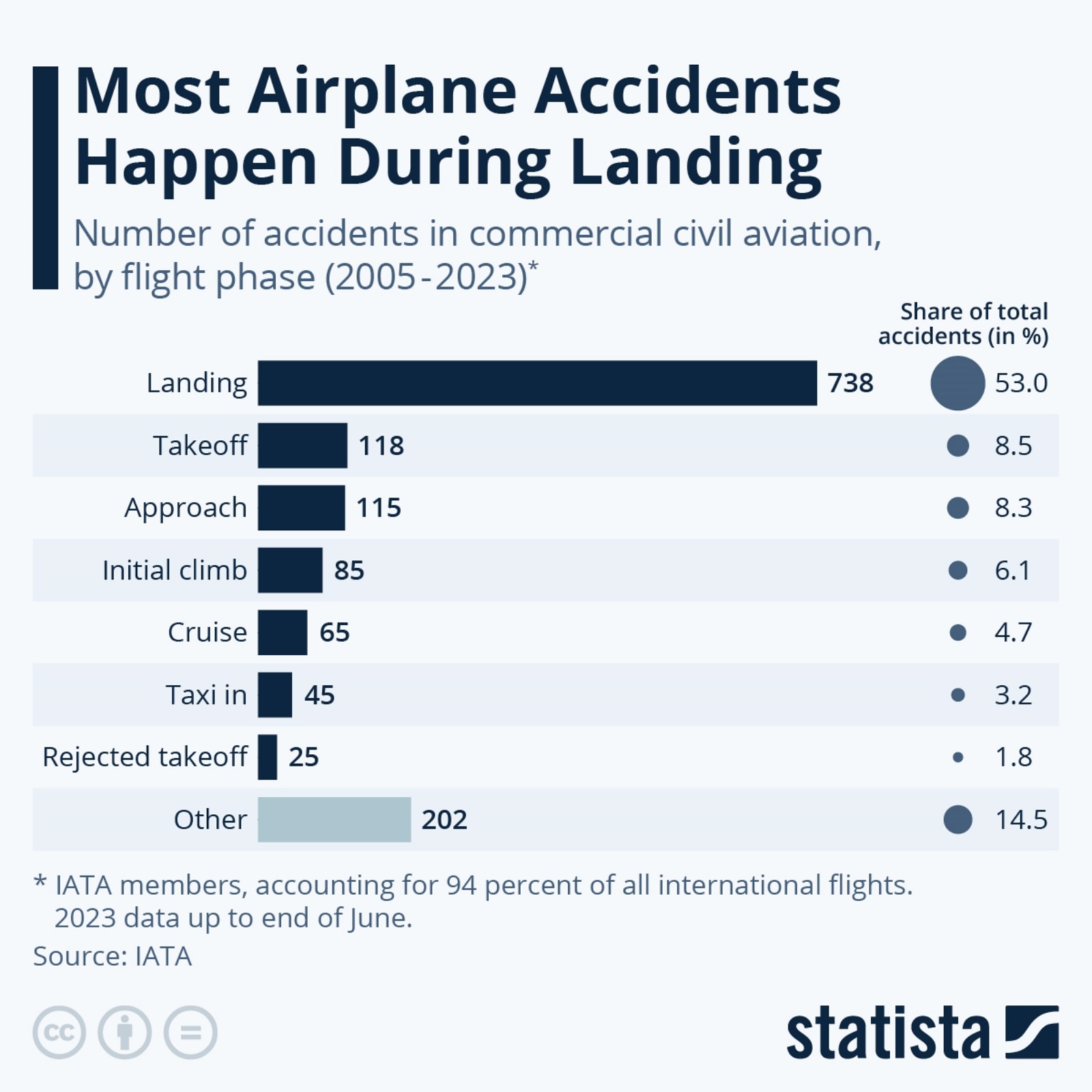 Chart 1 | Most crashes occur during landings, followed by takeoffs. Source: IATA via Statista
Chart 1 | Most crashes occur during landings, followed by takeoffs. Source: IATA via Statista
• The phases immediately before/after these two events — the approach phase before landing and the initial climb phase after takeoff — contributed to another 8.5% and 6.1% of accidents, respectively. Rejected takeoffs accounted for 1.8% of accidents.
• Boeing’s own data, which looked at fatal commercial jet accidents from 2015 to 2024, also paints a similar picture (see Chart 2).
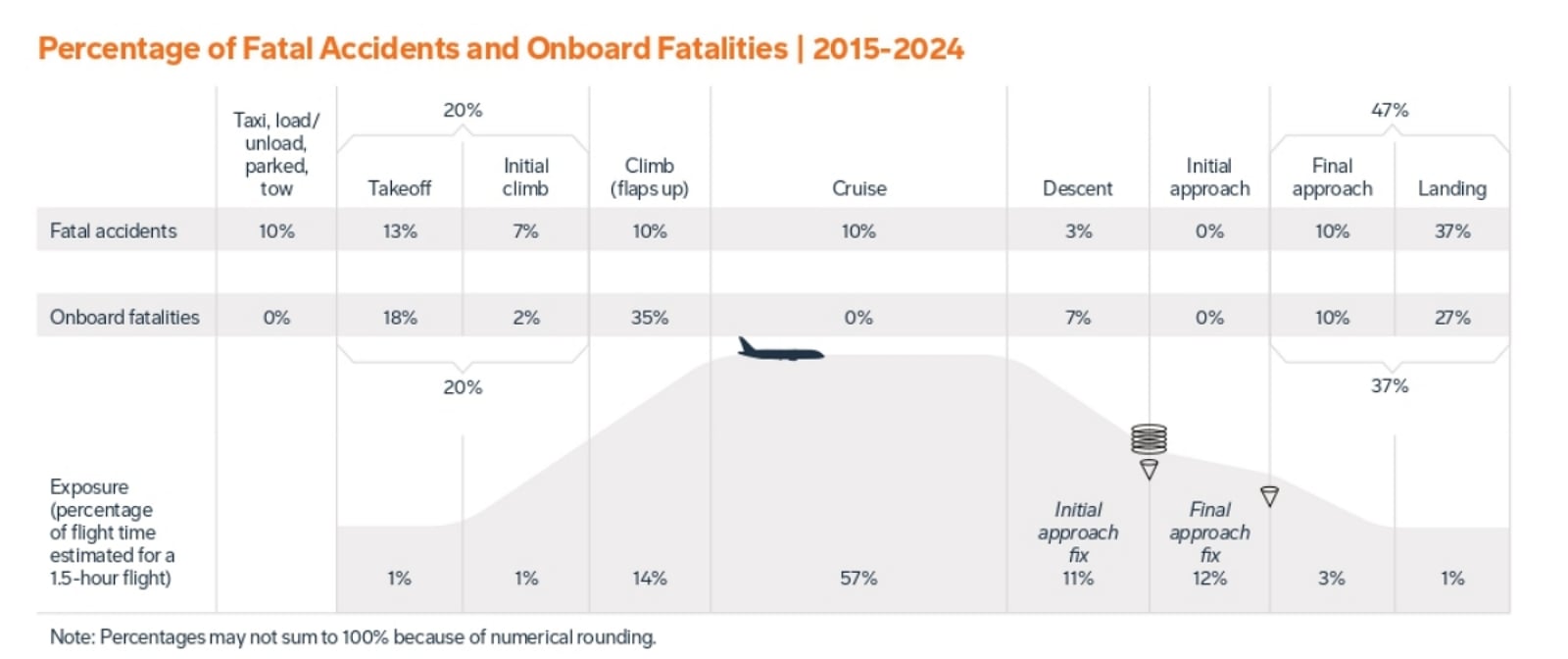 Chart 2 | Cruise phase is longest, but safest. Source: Boeing’s ‘Statistical Summary of Commercial Jet Airplane Accidents’ report of April 2025
Chart 2 | Cruise phase is longest, but safest. Source: Boeing’s ‘Statistical Summary of Commercial Jet Airplane Accidents’ report of April 2025
• The takeoff and the initial climb phases accounted for 20% of all such accidents as well as 20% of all fatalities despite accounting for only 2% of exposure. The subsequent climb phase accounted for another 10% of fatal accidents and, notably, 35% of fatalities, despite accounting for only 14% of exposure.
On the other hand, the final approach and landing phases accounted for 47% of all accidents and 37% of fatalities, despite making up 4% of exposure. The descent phase accounted for another 3% of accidents and 7% of fatalities.
But despite making up 57% of exposure, the cruise phase, that is, when the aircraft is flying at a stable altitude and steady speed, accounts for only 10% of fatal accidents and less than half a percent of fatalities.
• The most basic explanation for this is that during these phases, aircraft are what in aviation lingo is called “low and slow”, leaving pilots very little time to react if something goes wrong.
“When cruising at 36,000 feet, a pilot has the luxury of time and space to course correct. Even if both engines go out, the plane won’t just fall out of the sky. It becomes a glider. In this state, a typical airliner loses about a mile in altitude for every 10 it moves forward, giving the pilot a little over eight minutes to find a place to land. But if something goes wrong on the ground, that window shrinks considerably,” according to an article by Business Insider.
Other Important Articles Covering the same topic:
📍Why a majority of aviation accidents occur during takeoff & landing
📍Victims’ kin may get up to `1.5 cr each as insurance compensation
THE EDITORIAL PAGE
Syllabus:
Preliminary Examination: Indian Polity and Governance-Constitution, Political System, Panchayati Raj, Public Policy, Rights Issues, etc.
Main Examination: General Studies IV: Case Studies on above issues.
What’s the ongoing story: Pratap Bhanu Mehta writes: Crisis of free speech is crisis of social mistrust. Each act of legal censorship is a vote of no confidence in our autonomous agency
Key Points to Ponder:
• What is the right to freedom of speech and expression?
• What is Article 19 of the Constitution?
• What is ‘free Speech’?
• What are the Laws restricting the freedom of expression in India?
• What are the International Legal Regime on free Speech?
• Free Speech and Hate Speech- Where and what is that thin line drawn between these two?
• In the context of Fundamental Rights, what do you understand by the term “Absolute” and “Reasonable Restrictions”?
• Absolute and Reasonable Restrictions-Where and what is that thin line drawn between the two?
• Laws restricting the freedom of expression
• Impact of Hate Speech on Freedom of Expression, Free speech and on the Right to Freedom of Religion
Key Takeaways:
Pratap Bhanu Mehta writes:
• Regimes of free speech are fundamentally regimes of trust. They rely on a healthy distrust of the power of the state. Historically, no censor really thought they could get people to believe what the state wanted them to believe through censorship.
• Censorship was the assertion of authority. The best defence of free speech is not instrumental, based on the value of truth, democracy or progress. It relies on something more elemental: No one should have authority over what we think or say. Who gave authority to anyone else over what I can think or say?
• But a free speech regime depends on trust at many levels. It depends on trust in individuals that they would not easily be incited, inflamed or manipulated.
• Many would argue that this is an idealisation. Certain forms of speech and expression are indeed harmful. Some are intended to assault or injure. Many of these harms are captured in legal prohibitions against incitement or forms of hate speech.
• The conditions of communication where doubt and hate can travel faster than truth and reconciliation, the collapse of the contexts of communication, have added to a crisis of free speech. But the crisis of speech is a crisis of social mistrust; it will not be solved by legal means. Every act of legal censorship will also be an act of non-confidence in you and me, the citizen who cannot be trusted. The tragedy is that we find the work of the social creation of trust far more difficult that sealing the conditions of our own infantilism.
Do You Know:
• In drafting the Indian constitution, the founders of modern India were heavily influenced by the American and British constitutions. “Several members of the Constituent Assembly vividly recalled, and had even experienced, the colonial British administration’s attempts to stifle the freedom movement using oppressive anti-sedition laws,” writes Professor of Law, Niru Sharan in her paper, “Freedom of speech and expression; Indian constitution: An overview” (2015). Consequently, there was never any doubt whether the constitution should protect free speech.
• Consequently, Article 19 (1) (a) of the Indian constitution guarantees that “all citizens shall have the right to freedom of speech and expression.”
Interestingly, despite the near unanimity of the decision to include freedom of speech in the Constitution, this was the first clause of the constitution that came to be amended, barely 16 months after it was adopted.
• The First Amendment Act of the Indian Constitution remains to be one of the most fervently contested changes to the Constitution that was debated over 16 days. The bill for the amendment was moved by Nehru on May 16, 1951 with the thundering words, “somehow we have found that this magnificent constitution that we had framed was later kidnapped and purloined by lawyers.”
Other Important Articles Covering the same topic:
📍Dear Editor, I disagree: Not all speech is free
📍Sharmistha Panoli’s arrest and a question: Whose free speech?
ECONOMY
May inflation drops to 2.82% on easing food prices, lowest since February 2019
Syllabus:
Preliminary Examination: Economic and Social Development
Mains Examination: General Studies III: Indian Economy and issues relating to planning, mobilization, of resources, growth, development and employment.
What’s the ongoing story: A fall in prices of fruits, pulses, and cereals helped lower India’s headline retail inflation rate to a 75-month low of 2.82 per cent in May 2025, acording to data released on Thursday by the Ministry of Statistics and Programme Implementation (MoSPI), possibly providing some more easing room to the Reserve Bank of India (RBI).
Key Points to Ponder:
• What is Inflation?
• Know the Types of Inflation like Moderate Inflation, Galloping Inflation, Hyper-Inflation, Stagflation, Deflation, Core Inflation etc.
• What are the causes of Inflation in the present situation
• How Inflation is Measured in India?
• What is the Long term, Medium Term and Short-term impact of Inflation?
• New Standard for Measuring Inflation in India and Old Standard for Measuring Inflation-Key Differences
• Steps or Measures Taken by GOI to Control Inflation
• What do you understand by Wholesale Price Index (WPI) and Consumer Price Index? WPI and CPI is published by whom?
Key Takeaways:
• At 2.82 per cent, the latest inflation rate based on the Consumer Price Index (CPI) was somewhat lower than economists’ expectations of around 3 per cent. CPI inflation stood at 3.16 per cent in April 2025 and 4.80 per cent in May 2024. The last time retail inflation was lower was in February 2019, when it stood at 2.57 per cent.
• Per MoSPI data, food inflation as measured by the Consumer Food Price Index (CFPI) almost halved to a 43-month low of 0.99 per cent last month from 1.78 per cent in April 2025 as fruit prices declined by 2 per cent month-on-month (m-o-m) while those of pulses were down 1.7 per cent. Cereals also helped to bring down the overall food inflation in May 2025, with prices down 0.6 per cent compared to the previous month.
• Prices of vegetables, meanwhile, inched up slightly last month from April 2025. However, in year-on-year (y-o-y) terms, retail prices of vegetables were down 13.7 per cent — the sharpest pace of decline since December 2022, according to Paras Jasrai, associate director and economist at India Ratings & Research.
• Proteins became more expensive on a sequential basis in May 2025. While the price of meat and fish was up 1.5 per cent m-o-m, egg prices rose 2.5 per cent and milk turned 0.7 per cent more expensive in May.
Do You Know:
• Core inflation — which excludes items whose prices are volatile such as food and fuel and is seen as an indicator of underlying demand conditions — inched up to around 4.2 per cent, according to calculations done by The Indian Express. The steady rise in core inflation over the last year-and-a-half or so is suggestive of “steady demand conditions” in the economy, said Jasrai of India Ratings.
• In terms of the regional break-up, urban inflation eased to 3.07 per cent in May 2025 from 3.36 per cent the previous month, while rural CPI inflation declined to 2.59 per cent from 2.92 per cent. Inflation in May 2025 was highest in Kerala at 6.46 per cent, while it was lowest in Telangana, at 0.55 per cent.
Other Important Articles Covering the same topic:
📍Everyday Economics: What are WPI and CPI inflation rates?
|
PRELIMS ANSWER KEY |
|
1.(b) |
For any queries and feedback, contact priya.shukla@indianexpress.com
Subscribe to our UPSC newsletter. Stay updated with the latest UPSC articles by joining our Telegram channel – IndianExpress UPSC Hub, and follow us on Instagram and X.


- 01
- 02
- 03
- 04
- 05




